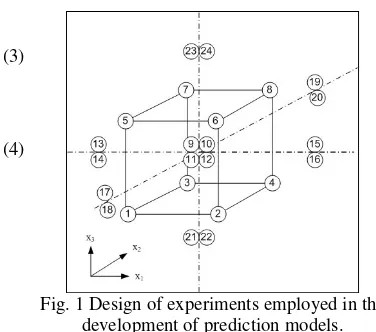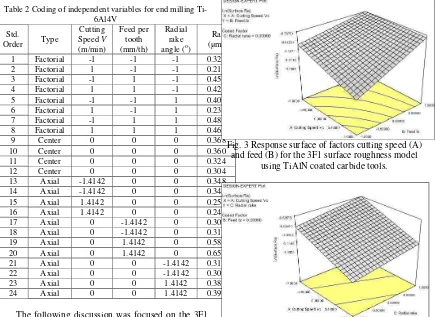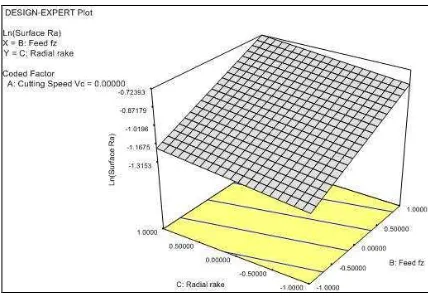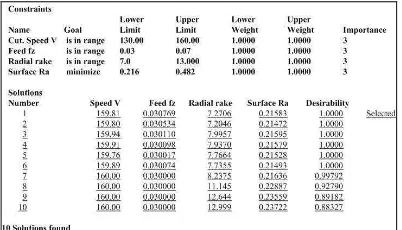i
FOREWORDS
Dean of Faculty of Engineering, University of Indonesia
The Quality in Research (QIR) Conference is the annual event organized by the Faculty of
Engineering, University of Indonesia. Since started in 1998, it has become an excellent forum of
discussion for all researchers from research institutions and universities all over the nation of
Indonesia. The 1
stand 6
thQIR Conferences had been successfully organized as the high quality
national conferences, and starting from the 7
thQIR conference, has been organized to invite
international research papers.
The 10
thQuality in Research International Conference having a theme of “Research for future better
life” is to provide an international forum for exchange of the knowledge, information, experience and
result as well as the review of progress and discussion on the state of the art and the future trend
various issues and the developments in the multi-fields of scientific and technology. The main
purposes of this conference are to provide a forum for free discussion of new ideas, development and
applications, including techniques and methods to stimulate and inspire pioneering work, to provide
opportunities for students and young engineers to meet their experienced peer and to provide a
meeting that will enforce progress, stimulate growth and advance the state of knowledge in the
multi-fields of science and technology.
We would like to express our heartiest to thank to all authors and participants for their active
participations in the 10
thon Quality in Research (QIR) International Conference 2007, and also to all
the paper reviewers, member of the technical committees, and member of the organizing committees,
for their support to the success of this conference. Last but not the least; we would also like to invite
all participants to the next on Quality in Research (QIR) Conference.
Faculty of Engineering, University of Indonesia
Dean,
ii
FOREWORDS
Chairman of 10th International Conference on QIR 2007
The 10
thQuality in Research International Conference will provide an international forum for
exchange the knowledge, information, experience and recent researches of various fields. With a
strong support and presentations from academic, industry and entrepreneurs, the conference will
provide an ideal platform to learn various fields and understand technological trends in the region.
The 10
thQuality in Research (QIR) International Conference has a theme of “Research for Better
Future Life” being the third time to go internationally, has invited limited papers from other nations
such as Korea and Malaysia. The conference is organized in parallel sessions focusing on the 8 (eight)
research areas such that many researchers and peer groups may focus their discussion on the relevant
topics. All submitted papers had been reviewed by the technical committees and had been arranged
into 8 (eight) sub-themes according to the following fields:
‐
Energy, Process and Environmental Engineering and Management: Energy and
environmental issues, combustion technology, fluids mechanics and thermal fluid machinery,
thermodynamics and heat transfer, geotechnical and environmental engineering, etc.
‐
Industrial, Manufacturing, Material Engineering, and Management: Production
Engineering, Supply Chain Management, Innovation System, Maintenance System, Quality
Management System, Human Factors Engineering, Organizational System, Fabrication and
Industrial Automation, Manufacturing System: Control Management and Information
Technology, etc
‐
Biomaterial, Biomedical Engineering and Biotechnology: Biomedical numerical modeling,
Biomaterial, Biosensor, Biocompatibility, Biomechanics, Biotechnology, Biomedical
Instrumentation, Biomedical Imaging
‐
Design and Infrastructure Engineering and Management: Product design and
development, composite: Materials and applications, structural dynamics, mechanics of
materials, Construction Management, Public Infrastructures and Services, Structural
Engineering, etc
‐
Special Session on Electronics Engineering
‐
Information and Computation Technology
‐
Sustainable Architecture
‐
Nanomaterials and Nanotechnology: Nano structured material, Nanotechnology,
Nanocomposite, MEMS, Self Assembled Monolayer, Thin Film, etc
The main purposes of this conference are to provide a forum for free discussion of new ideas,
development and applications, including techniques and methods to stimulate and inspire pioneering
work, to provide Opportunities for students and young engineers to meet their experienced peer and to
provide opportunities for students and young engineers to meet their experienced peer and to provide
a meeting that will enforce progress, stimulate growth and advance the state of knowledge in the
multi-fields of science and technology.
iii
Gunawan Wibisono, Ph.D
Steering Committee
1.
Prof. Dr-Ing. Axel Hunger, Universitaet, Duisburg-Essen, Germany
2.
Prof. Dr. Carlo Morandi, Universida Degli Studi de Parma, Italy
3.
Prof. Dr. Iwao Sasase, KEIO University, Japan
4.
Prof. Kim Kyoo-ho, Yeungnam University, Korea
5.
Prof. Dr. Ir. Irwan Katili, University of Indonesia
6.
Prof. Dr. Ir. Bambang Suryawan, MT, University of Indonesia
7.
Prof. Dr. Ir. Dadang Gunawan, M.Eng, University of Indonesia
8.
Prof. Dr. Ir. Johny W Soedarsono, DEA, University of Indonesia
9.
Prof. Ir. Gunawan Tjahjono, M.Arch, Ph.D, University of Indonesia
10. Prof. Dr. Ir. M. Nasikin, University of Indonesia
11. Isti Surjandari, Ph.D, University of Indonesia
12. Prof. Dr. Ir. Budi Susilo Soepandji, University of Indonesia
13. Prof. Dr. Ir. Sutanto Soehodho, University of Indonesia
14. Prof. Dr. Ir. Sulistyoweny Widanarko, Dilp. SE. MPH, University of Indonesia
15. Prof. Dr. Ir. I Made Kartika Dipl. Ing, University of Indonesia
16. Prof. Dr. Ir. Tresna P. Soemardi, University of Indonesia
17. Prof. Dr. Ir. Sardy, M.Eng, M.Sc, University of Indonesia
18. Prof. Dr. Ir. Bagio Budiardjo M.Sc, University of Indonesia
19. Prof. Dr. Ir. Djoko Hartanto, M.Sc, University of Indonesia
20. Prof. Dr. Ir. Eddy Siradj, M.Eng, University of Indonesia
21. Dr. Ir. Kemas Ridwan K, University of Indonesia
22. Prof. Dr. Widodo Wahyu P, DEA, University of Indonesia
23. Ir. Boy Nurtjahyo M.,MSIE, University of Indonesia
24. Dr. Ir. Dedi Prihadi DEA, University of Indonesia
25. Ir. Hendri D.S. Budiono, M.Eng, University of Indonesia
26. Dr. Ir. Sigit Pranowo Hadiwardoyo, DEA, University of Indonesia
27. Dr. Ir. Herr Soeryantono, University of Indonesia
2
2
8
8
.
.
Prof. Rinaldy Dalimi, Ph.D, University of Indonesia
Chairman of the Conference
Ir. Gunawan Wibisono, M.Sc, Ph.D
Technical Committee
1.
Ir. Gunawan Wibisono, M.Sc, Ph.D
2.
Dr. Yosia Irwan
Industrial, Manufacturing, Material Engineering, and Management Design and Infrastructure Engineering and Management
Nanomaterials and Nanotechnology
Foreword From The Dean of Faculty Engineering, UI
Foreword From Chairman of 10th International Conference on QIR 2007 The Committee of 10th International Conference on QIR 2007
Paper No. Title and Name of Author(s)
IMM-01 Interest Relativity Mapping of Stakeholders Perceptions on the Proposed Plan of Integrated Ticketing System Policy in DKI Jakarta's Land Transportation Network using Dynamic Actor Network Analysis
by: Akhmad Hidayatno, Dita Ade Susanti
IMM-02 Supplier performance evaluation based on efficiency rate using AHP and DEA methods at PT X
by: Erlinda M, Fauzia D, and Dola V
IMM-03 Measurement and comparison of subcontractor performances using data envelopment analysis (DEA) in PT X
by: Fauzia D, Erlinda M, and Lina R
IMM-04 Analyzing investment effectiveness of LQ45 stocks using factorial design
by: Isti Surjandari and Clara Rosalia Rangga Mone
IMM-05 Six Sigma Application to Improve The Quality of Cam Chain on Assembly Process in PT. FSCM
by: T. Yuri M. Zagloel, Indra Kurniawan.
IMM-06 Response Planning Analysis in Project Risk Management of Telecommunication Tower Construction
by: M. Dachyar and Maryono NB
IMM-07 Developing a Performance Measurement System in Maintenance Department with Balanced Scorecard Method
by: M. Dachyar, Muhammad Darliansa Hilmy
IMM-08 New Paradigm from Logistics to Supply Chain Management
by: Dadang Surjasa
IMM-09 Design of Vendor Performance Rating Model using the Analytic Network Process
by: M. Dachyar, Ade Amalia Lubis
IMM-10 Optimization of Multi-Responses Process using Response Surface Methodology (RSM) Approach
by: Sachbudi Abbas Ras, Purdianta
IMM-11 A Study to Design of Information Catalog Of Academic Division in Andalas University
by: Insannul Kamil, Hilman Raimona Zaidry, Dewi Ike Andriyani
IMM-12 A Study to choose the domestic airlines for Padang - Jakarta route using Analytic Hierarchy Process
by: Insannul Kamil, Ahmad Ridha Putra
IMM-13 Effect of Heat Treatment on the Characteristics of SiO2 Added-ZnFe2O4 Ceramics for NTC Thermistor
by: Wiendartun, Dani Gustaman Syarif, Fitri Anisa
IMM-14 Failure Analysis of 42 Pipeline Rupture
by: Deni Ferdian and Winarto
IMM-15 Optimization of Surface Roughness when end milling Ti-6Al-4V using TiAlN Coated Tool
by: A.S. Mohruni, S. Sharif, M.Y. Noordin,V.C. Venkatesh
IMM-16 Comparison of Ascorbic Acid and Zinc Polyphospate as Corrosion Inhibitors in a Secondary Cooling System
by: Yunita Sadeli, Shanti Perwitasari, Nandyo Alpalmy
IMM-17 Analysis of 32 Pipe Weld Crack on Gas Transmission Pipeline
by: Winarto, Deni Ferdian, Muhammad Anis
IMM-18 Failure Analysis of Motor Bike Steering Shaft
by: Winarto, Zulkifli, and Dwi Marta Nurjaya
IMM-19 Development of Nodular Indefinite Chilled Iron (NICI) by Combination of Controlled Cooling Heat Treatment and Copper Alloying Element
by: Y. Prasetyo, S. K. Lee, E. R. Baek
IMM-20 Application Response Surface Methodology in Developing Tool Life Prediction Models when End Milling Titanium Alloys Ti-6Al-4V.
by: A.S. Mohruni, S. Sharif, M.Y. Noordin,V.C. Venkatesh
IMM-21 On The Estimation of Visco-elastic Properties for Nylon and GFRP materials
by: Gatot Prayogo, Danardono A.S.
IMM-22 Interfacial Shear Strength and Debonding Mode Between The Ramie (Boehmeria Nivea) Fiber Surface and Polymers Matrix.
by: Eko Marsyahyo
IMM-23 Fabrication of CuO Added-BaTiO3 Ceramics for NTC Thermistor
by: Dani Gustaman Syarif
IMM-24 Structure and Properties of Cu(In1-xA1x)Se2Thin Films Grown by RF Magnetron Sputtering for Solar Cells
Applications
by: Badrul Munir, Kyoo Ho Kim
IMM-25 Amorphous Nature of TiO2-PMMA nanohybrids and Tecniques to Enhance its Nanocrystallinity
by: A. H.Yuwono
IMM-26 Deposition of SnO2 transparent conducting films and their characterization
by: Dwi Bayuwati and Syuhada
IMM-27 Development of multi-axis force detector for 5-DOF articulated robot
by: Gandjar K, Aji S
IMM-28 The development of portable blood carrier by using thermoelectrics and heat pipes
by: Nandy P, Hiban H, and Parlin Adi S
IMM-29 Object Recognition based on Its Features for Human Robot Dialog
by: Rahmadi Kurnia
IMM-30 Development of analytic solution of inverse kinematics and motion simulation for 5-DOF milling robot
by: Gandjar K, Hafid B
IMM-31 Effects of parallel and zigzag blade configuration an dflow passage in casing cover on centrifugal pump performance
by: Harinaldi and Sugeng Sunarto
IMM-32 Determination of Flow Proporties of Mud Slurry
by: Ridwan, Yanuar, Budiarso, and Raldi AK
IMM-33 Development of Prototype of Hybrid Vehicle Controller
by : Gandjar Kiswanto, Danardono S., Endiandika TP, Pranadityo
IMM-34 Role of fibres on the shear strength of peat Case: Tampan-Riau Peat
by: Wiwik Rahayu
IMM-35 Comparison Analysis of Paddy Dryer Recirculatory Batch Original and Its Modification Through Implementation of CFD
by: Adi Surjosatyo
IMM-36 Minimize of Ceramic Defects using Six Sigma to Decrease Customer Complain
ISSN: 1411-1284
Proceeding 10th Int’l QIR 4-6 Dec 2007 IMM-15
1/6
Optimization of Surface Roughness when End Milling
Ti-6Al4V using TiAlN Coated Tool.
A.S. Mohruni
*, S. Sharif
**, M.Y. Noordin
**, V.C. Venkatesh
*Faculty of Engineering, Sriwijaya University, Jl. Raya Prabumulih Km.32, Indralaya, 30662 Tel. +62-711-410745 email : mohrunias@yahoo.com, mohrunias@unsri.ac.id **
Faculty of Mechanical Engineering, Universiti Teknologi Malaysia, 81310-UTM Skudai, Johor, Malaysia
Abstract– Investigation on the surface roughness of titanium alloy, Ti-6AL4V during end milling using TiAlN coated solid carbide tools was conducted at various cutting conditions under flood coolant. Surface roughness as one of the component for surface integrity was examined using response surface methodology at various primary cutting parameters such as cutting speed, feed and radial rake angle. Results showed that the second order surface roughness model was the best model and used to ascertain the optimum cutting conditions using response surface methodology. ANOVA was employed to validate the predictive surface roughness models.
Keywords– surface roughness models, end milling, titanium alloys, responses surface methodology, TiAlN coating
I. INTRODUCTION
itanium alloys are used extensively in the aerospace industry for structural components and as compressor blades, disc, casing, etc. in the cooler parts of gas turbine engines. They are also found suitable to be used in such diverse areas such as energy and chemical processing industries, offshore and marine applications, automotive industry, medical implants, and sporting equipment. Titanium alloys have excellent strength-to-weight ratio and good elevated temperature properties (up to approximately 550 oC). Consequently, when operating temperatures exceed 130 oC, titanium alloys can be used as an alternative to aluminum, or at higher temperatures still, titanium can be used as a lightweight alternative to nickel-based alloys or steel [1] - [6].
Surface integrity which includes surface roughness is very critical to the functionality of a machined component. It influences several functional attributes of a part, such as coefficient of friction, mating characteristics, fatigue, heat transfer etc. Thus surface finish measurement represents one of the most important aspects in the analysis of machining process. As reported by previous researchers [7] - [10] the appropriate range of cutting speed, feed, which provide a satisfactory surface finish and tool life are
very limited. According to their findings, the tool geometry effect was not taken into consideration during end milling operation. An effort to include the effect of tool geometry on surface roughness in turning [11] and milling [12] – [14] operations using response surface methodology were carried out by few researchers.
In this investigation, the tool geometry (radial rake angle), cutting speed and feed were evaluated when develop the surface roughness mathematical models and to determine the optimum cutting conditions when end milling titanium alloy Ti-6Al4V using response surface methodology.
II. DESCRIPTION OF THE MATHEMATICAL MODEL
The first step in developing a mathematical model for surface roughness is to propose the postulation of the mathematical models in relations to the machining process. To formulate the postulated mathematical model, the proposed surface roughness model is considered as a function of cutting speed V, feed fz
and radial rake angle γo. Other factors such as
machine tools, stability, entry and exit condition etc are kept constant.
Thus the proposed surface roughness model when end milling Ti-6Al4V in relation to the independent variables investigated, can be formulated as
' parameters to be estimated using experimental data.
To determine the constants and exponents of Equation (1), the mathematical model will have to be linearized by performing natural logarithmic
ISSN: 1411-1284
which can also be transformed into:
ε
and rewritten in the following form:
3
where y is the true response of surface roughness on a natural logarithmic scale, yˆ1 is the natural logarithmic value of predicted (estimated) surface roughness, x0= 1 (a dummy variable), x1, x2and x3 are
the natural logarithmic transformation (in coded variables) of V, fzand γorespectively, ε is the natural
logarithmic transformation of the experimental error ε’ and b0, b1and b3 are the model parameters to be
predicted using the experimental data.
To facilitate the investigation of extended observation region, a second order model is required when the second order and interaction effect of V, fz,
γo are significant. The first order model in Equation
(4) can be extended to the second order model as:
2 experimental measured surface roughness on a natural logarithmic scale and b values are the parameters, which are to be estimated by the least squares method [7][8] [12][13][14].
Validity of the resulted prediction model, which is used for optimizing the machining process has to be tested using ANOVA, while Design Expert 6.0 software [15] was used to analyze the experimental results.
III. EXPERIMENTAL DETAILS
III.1 EXPERIMENTAL DESIGN
In performing the experimentation, the design of experiment has a major effect on the number of experiments to be conducted. It is essential to have a well designed experiment so that the number of experiments required can be minimized [14]. The screening trials were conducted using 2k-factorial design with replicated center points, which utilized the first 12 tests (Fig. 1), to observe the significant factors [16].
In order to gain more information in the extended range of observation, the central composite design (CCD) was applied, which is 2k-factorial design augmented with axial stars points as presented in Fig. 1
Fig. 1 Design of experiments employed in the development of prediction models.
From previous study [17], the distance between center points and star points, α is 1.4142 for nc = 4
with 3 factors.
III.2 CODING OF INDEPENDENT VARIABLES Cutting parameters (V, fz, γo) are coded using
transformed Equation (6) according to the particular circumstance of limitation of the milling machine.
0
corresponding to the base or zero level [7] - [10], [14] and [17]. Another similar coding was reported by [12] and [13]. The level of the independent variables and coding identification are illustrated in Table 1.
Table 1 Coding of independent variables for end milling Ti-6Al4V
Level in coded form Independent
III.3 EXPERIMENTAL SET-UP
Surface roughness of the machined surface was measured using a portable Taylor Hobson Surftronic +3 at the initial cut of the new solid carbide end mill, grade K30 with different radial rake angle.
ISSN: 1411-1284
Proceeding 10th Int’l QIR 4-6 Dec 2007 IMM-15
3/6
constant axial depth of cut (aa) 5 mm and radial depthof cut (ap) 2 mm under wet conditions using 6% of water base coolant.
IV. EXPERIMENTAL RESULTS
The surface roughness of machined surface was measured five times at the end of each cutting trial and the average values were tabulated accordingly in
Table 2.
After conducting the analysis of appropriate surface roughness models (2k-factorial model, 1st order CCD model and 2nd order CCD model), it was found that the 3F1 surface roughness model was the most accurate model among them.
Table 2 Coding of independent variables for end milling Ti-6Al4V
The following discussion was focused on the 3F1 surface roughness model, its result is written as conditions with the following range of respective cutting speed V, feed per tooth fzand radial rake angle
γo: 130.00 ≤V≤ 160.00 m.min
-1
; 0.03 ≤ fz≤ 0.07; 7.0
≤ γo≤ 13.0 (o).
Fig. 2 ANOVA for the 3F1-surface roughness model using TiAlN coated carbide tools.
Fig. 3 Response surface of factors cutting speed (A) and feed (B) for the 3F1 surface roughness model
using TiAlN coated carbide tools.
Fig. 4 Response surface of factors cutting speed (A) and radial rake angle (C) for the 3F1 surface roughness model using TiAlN coated carbide tools.
ISSN: 1411-1284
Proceeding 10th Int’l QIR 4-6 Dec 2007 IMM-15
4/6
Fig. 5 Response surface of factors feed (B) and radialrake angle (C) for the 3F1 surface roughness model using TiAlN coated carbide tools.
In order to widen the point of view, additional observation on the 2nd order CCD surface roughness has to be investigated. From the analysis, the 2nd order surface roughness model can be formulated as
Fig. 6 ANOVA for the 2nd order CCD-surface roughness model using TiAlN coated carbide tools.
To prove the adequacy of the surface roughness model, ANOVA was carried out and results are listed in Fig. 6. ANOVA results indicated that LOF was not significant. Thus model or Equation (8) is valid for end milling Ti-6Al4V using TiAlN coated carbide tools under wet conditions with the following range of respective cutting speed V, feed per tooth fzand radial
rake angle γo: 124.53 ≤V≤ 167.03 m.min
-1
; 0.025 ≤ fz
≤ 0.083; 6.2 ≤ γo≤ 14.8 (o).
From the following figures (Fig. 7 and Fig. 8), it is obvious to recognize that even the 3F1-surface roughness model is the most accurate model, it can’t describe extended observation region with adequate accuracy (see standard order 13 to 24 in Fig. 7). In contrary, the 2nd order CCD-surface roughness model,
which is less accurate than 3F1-surface roughness model, can represent extended range of observation better than 3F1-model (see standard order 13 to 24 in Fig. 8). It has proven the validity of each model for particular observation field.
Actual Ra vs Predicted Ra using 3F1-Surface Roughness Model.
0
Fig. 7 Comparison actual surface roughness value with predicted surface roughness value using 3F1-surface roughness model for TiAlN coated carbide
tools.
Actual Ra vs Predicted Ra using 2nd
order CCD-Surface Roughness Model.
Fig. 8 Comparison actual surface roughness value with predicted surface roughness value using 2nd order
CCD-surface roughness model for TiAlN coated carbide tools.
Based on the most accurate surface roughness model (3F1-surface roughness model), optimum cutting conditions for a minimum surface roughness value is to be investigated.
From Fig. 9 and Fig. 10, optimum cutting conditions were revealed according to their constraint. First optimum cutting condition was when end milling using V = 159.81 m/min; fz≈ 0.031 mm/tooth, γo≈ 7.3
(o). Another optimum cutting condition shown in Fig. 10 was V = 160.00 m/min; fz≈ 0.054 mm/tooth, γo≈
ISSN: 1411-1284
Proceeding 10th Int’l QIR 4-6 Dec 2007 IMM-15
5/6
Fig. 9 Possible solutions for 3F1-surface roughnessmodel using TiAlN coated end mill with nc = 4
when V and fz are in range
Fig. 10 Comparison actual surface roughness value with predicted surface roughness value using 2nd order
CCD-surface roughness model for TiAlN coated carbide tools.
V. CONCLUSIONS
There were three surface roughness models that satisfied for describing the surface roughness values when end milling Ti-6Al4V, namely 3F1-model, 1st and 2nd order CCD models. The most accurate among them was the 3F1-surface roughness model. The 2nd order surface roughness model described better in the extended observation region than the 3F1-model.
According to optimization processes, two optimum cutting conditions were discovered for two different objectives of constraints, when end milling Ti-6Al4V using TiAlN-coated carbide tools.
ACKNOWLEDGMENT
The authors wish to thank the Research Management Center, UTM and the Ministry of Science, Technology and Innovation Malaysia for their financial support to the above project through the IRPA funding Vote no. 74545.
REFERENCES overview of the machinability of aeroengine alloys”,
Journal of Materials Processing Technology, vol. 134, pp. 233-253, 2003.
[3]. R.R. Boyer, “An overview on the use of titanium in the aerospace industry, Materials Science Engineering,
A213, pp. 103-114, 1996.
[4]. A.K.M. Nurul Amin, A.F. Ismail, M.K. Nor Khairusshima, “Effectiveness of uncoated WC-Co and PCD inserts in end milling of titanium alloy-Ti-6Al-4V, Journal of Materials Processing Technology, vol. 192-193, pp. 147-158, 2007.
[5]. J.I. Hughes, A.R.C. Sharman and K. Ridgway, “The effect of tool edge preparation on tool life and workpiece surface integrity, Proceeding of the Institution of mechanical Engineers, vol. 218, no. 9, pp. 1113-1123, 2004.
[6]. M. Dumitrescu, M.A. Elbestawi, T.I. El-Wardhany, “Mist coolant applications in high speed machining of advanced material”, In Metal Cutting and High Speed Machining, Edited by D. Dudinzski, A. Molinari, H. Schulz, Kluwer, pp. 329-339, 2002.
[7]. M. Alauddin, M.A. El-Baradie, M.S.J. Hasmi, “Optimization of surface finish in end milling Inconel 718”, Journal of Materials Processing Technology,
vol. 56, no. 1, pp.54-65, 1996
[8]. I.A. Choudhury, M.A. El-Baradie, “Machinability assessment of Inconel 718 by factorial design of experiment coupled with response surface methodology”, Journal of Materials Processing Technology, vol. 95, no. 1, pp. 30-39, 1999.
[9]. A. Mansour and H. Abdalla, “Surface roughness model for end milling: a semi free cutting carbon case hardening steel (EN32) in dry condition”, Journal of Materials Processing Technology, vol. 124, no. 1-2, pp. 183-191, 2002.
[10].Y. Sahin and A.R. Motorcu, “Surface roughness model for machining mild steel with coated carbide tools,
Materials & Design, vol. 26, no.4, pp. 321-326, 2005. [11].M.Y. Noordin, V.C. Venkatesh, S. Sharif, S. Elting, A.
Abdullah, “Application of response surface methodology in describing the performance of coated carbide tools when turning AISI 1045 steel”, Journal of Materials Processing Technology, vol. 145, no. 1, pp. 46-58, 2004.
[12].N.S. K. Reddy, P.V. Rao, “A Genetic algorithmic approach for optimization of surface roughness prediction model in dry milling”, International Journal of Machining Science and Technology, vol. 9, no. 1, pp. 63-84, 2005.
[13].N.S.K. Reddy, P.V. Rao, “Selection of optimum tool geometry and cutting conditions using a surface roughness prediction model for end milling”, The International Journal of Advanced Manufacturing Technology, vol. 26, no. 11-12, pp. 1202-1221, 2005. [14].S. Sharif, A.S. Mohruni, M.Y. Noordin, V.C.
Venkatesh, “Optimization of surface roughness prediction model in end milling titanium alloy (Ti-6Al-4V)”, Proceeding of International Conference on Manufacturing Science and Technology (ICOMAST),
28-30 August, Melaka, Malaysia, pp. 55-58, 2006. [15].Design Expert Software 6.0, User’s Guide, Technical
Manual, Stat-Ease Inc. Minneapolis, MN, 2000. [16].D.C. Montgomery, “Design and Analysis of
Experiments, 5th ed. Wiley, New York, 2001.
ISSN: 1411-1284
Proceeding 10th Int’l QIR 4-6 Dec 2007 IMM-15



